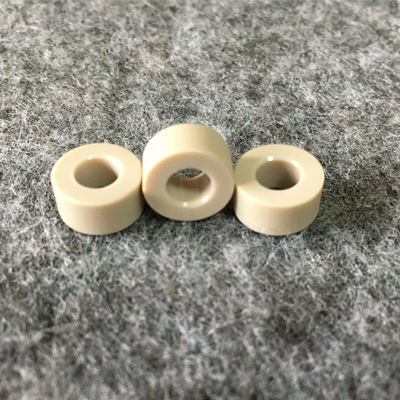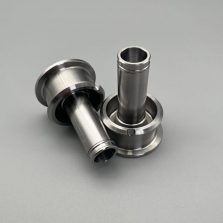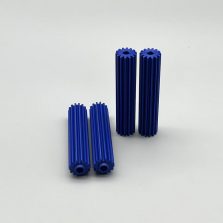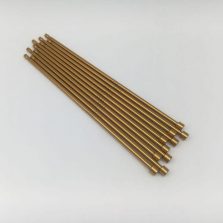Description
PolyEtherEtherKetone (PEEK)
Maintains wear resistance and mechanical strength up to 260℃ continuous use.
PEEK is the performance material of choice for aggressive environments such as high temperatures, wet processes, and heavy loads. It combines exceptional wear, chemical and moisture resistance with very high strength, dimensional stability and stiffness. PEEK can be continuously exposed to hot water or steam with no distortion, corrosion or galling.
Unreinforced PEEK is a general purpose material noted for its high elongation and toughness. Glass fiber-reinforced PEEK offers increased strength, stiffness and stability at high temperatures, while carbon fiber-reinforced PEEK gives designers the benefit of excellent compression strength and stiffness and reduced expansion rates. PEEK is easily machined to precise tolerances.
Description
- Polyetheretherketone
- Natural (beige), black
Properties
- Superior wear resistance and dimensional stability to 260℃ continuous use
- Excellent resistance to chemicals, steam and hydrolysis
- Very low moisture absorption
- Very high thermal stability (V-O UL 94 rating)
- Superb flexural and torsional strength
- Abrasion resistant
- Good dielectric properties
- Good resistance to radiation
- Self-extinguishing
Applications
- Sliding and wear parts
- Food contact parts
- Gears
- Valve seats
- Pump wear parts
- Structural parts
- Appliance parts
- Bushings, bearings, seals and rings
- Plug connectors
- Wafer carriers
Industries
- Chemical technology
- Mechanical engineering
- Energy industry
- Electronics
- Food technology
- Oil and gas industry
- Aircraft and aerospace technology
- Automotive industry
- Semiconductor technology
- Vacuum technology
PEEK TECHNICAL DATA SHEET
| Item | Norm | Unit | Value |
| Physical Properties | |||
| Color | – | – | Natural or Black |
| Density | ISO 1183-1 | g/cm3 | 1.3±0.01 |
| Water Abs. (25℃.24Hrs) | ISO 62 | % | 0.5 |
| Mould shrinking percentage | 3mm,170℃, Flow direction | % | 1.2 |
| Perpendicular to flow direction | 1.5 | ||
| Thermal Properties | |||
| Melting point | ISO 11357 | ℃ | 343 |
| Distortion temperature | ISO 75-1/-2 | ℃ | 163 |
| Continuous using temperature | UL 74685 | ℃ | 260 |
| Glass transition temperature | ISO 11357 | ℃ | 143 |
| Machanical Properties | |||
| Tensile strength(23℃) | ISO527-2/1B/50 | Mpa | 100 |
| Tensile elongation(23℃) | ISO527-2/1B/50 | % | 34 |
| Bending strength(23℃) | ISO 178 | Mpa | 163 |
| Compressive strength(23℃) | ISO 604 | Mpa | 118 |
| Lzod impact strength ( no gap) | ISO 180/U | KJm-2 | No crack |
| Rockwell hardness | ISO 2039-2 | – | 99 |
| Friction coefficient | – | μ | 0.30-0.38 |
| Electrical Properties | |||
| Dielectric strength | IEC 248 | KV/mm | 1.8 |
| Dielectric constant | IEC 250 | – | 3.2 |
| Surface resistivity | – | Ω | 1015 |
| Miscellaneous Data | |||
| Flammable level | UL 94 | V-0@mm | 1.5 |
For more information, email to us!




